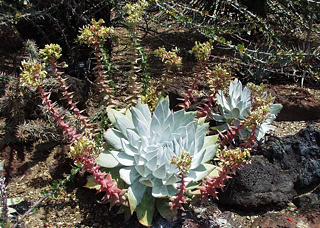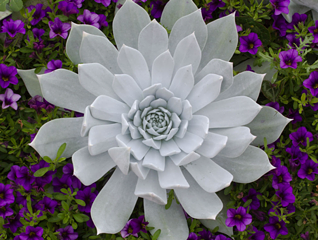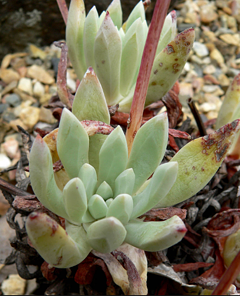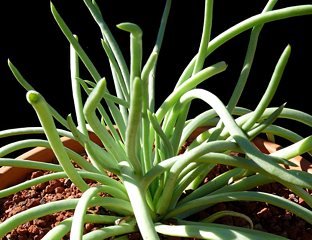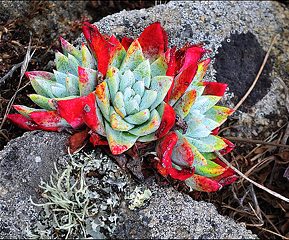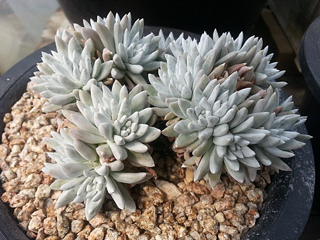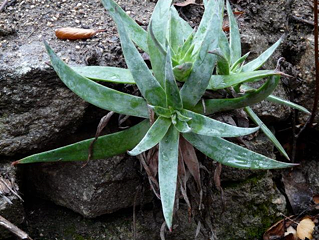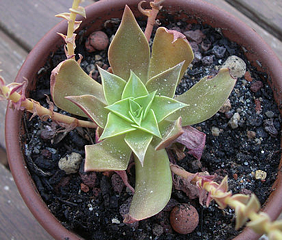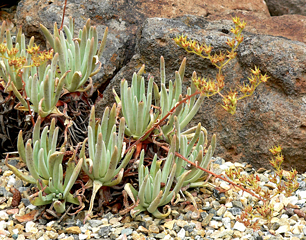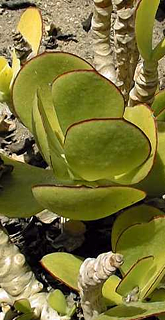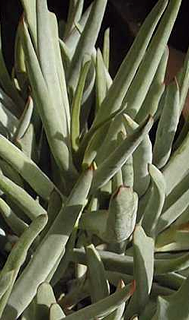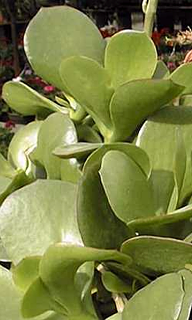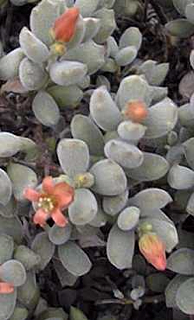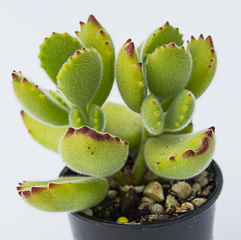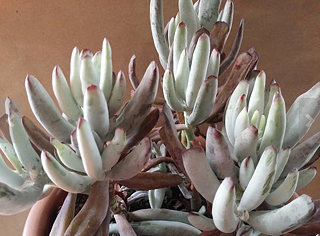Submitted by: Jim Tanner
Dudleya is a genus of succulent perennials, consisting of about 45 species in southwest North America and northern Mexico. Only a handful are common in cultivation and many are on the endangered species list. A few can only be found on some of the islands off the California coast.
At one time Dudleyas were included in the Echeveria genus, and one can certainly see why as some species are a bit hard to tell from Echeverias. All Dudleyas are rosette-forming succulents, like the Echeverias, and many are similarly colored. Most Dudleyas are silvery grey, have very delicate leaves that are either flattened or tubular and tend to form stems over time. Most of the flat, thick-leaved forms grow as solitary rosettes while the tubular-leaved species form dense, suckering colonies. The flowers differ somewhat from Echeveria flowers and that is probably the primary reason they are in their own genus now. Dudleya flowers arise from somewhere near the bottom of the rosettes normally (rarely from the rosette center as most Echeveria flowers do). Also, Dudleya flowers are characteristically covered with leaves that are spread out along the peduncle up to the flower, another non-Echeveria-like trait. Most Dudleyas flower in late winter to early spring, and flower colors range from white, to yellow to bright red. In horticulture, Dudleya should be planted at an angle. This prevents the buildup of water in the leaves, which may lead to the leaves rotting.
The species in the genus Cotyledon range from South Africa to Arabia. Many of the species that used to be included have been moved to the genus tylecodon. The remaining species have a very varied appearance, are generally small succulent shrubs.
They can be used in landscaping in climates that are mostly frostless, and are interesting plants in raised beds or containers.
Most Cotyledon are easily grown from cuttings.
LATIN LOOKUP – Loquerisne Latine (Do you speak Latin)?
The meanings of latin plant names on this page – from http://davesgarden.com/guides/botanary/
- brittonii [brit-TON-ee-eye]
Named for Nathanial Lord Britton, or his wife Elizabeth Gertrude (Knight) Britton; both were early 20th century botanists. - caespitosa [kess-pi-TOH-suh]
Tufted. - Cotyledon [kot-EE-lee-don]
Joint socket, cavity. - Dudleya [DUD-lee-yuh]
Named for William Russel Dudley, 19th century botany professor at Stanford University in California (U.S.). - edulis [ED-yew-liss]
Edible. - farinosa [far-ih-NOH-suh]
Mealy or powdery. - gnoma [NOHM-uh]
Dwarf. - lanceolata [lan-see-oh-LAY-tuh]
Lance-shaped. - macrantha [ma-KRAN-tha]
Large flowered. - orbiculata [or-bee-kul-AY-tuh]
Round. - stolonifera [sto-lo-NIF-er-uh]
Bearing runners. - tomentosa [toh-men-TOH-suh]
Covered with fine, matted hairs. - virens [VEER-enz]
Green.
